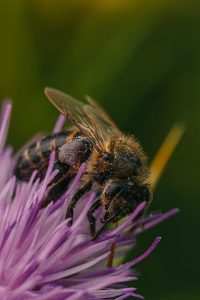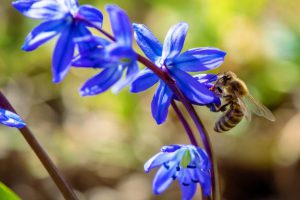By: Jay Evans
Bees, Beenomes, And Benefits From Science
Close your eyes and imagine a realm where you are seeing features of biology for the very first time, allowing you to piece together diverse insights you would never have dreamed of just moments before seeing them – insights and connections that change decades of scientific thinking. No, this is not a stroll through a tropical rain forest (though that sounds nice, too), but the first look scientists get when they sequence, assemble, and investigate an organism’s genome. Honey bees faced this scrutiny a decade ago and the results continue to provide insights into not just honey bee biology but much of life as we know it. I described the methods and some driving forces for this effort in Bee World (https://www.researchgate.net/publication/298550303_Beenome-mania_how_will_the_honey_bee_genome_project_help_beekeepers) but the key paper describing the honey bee genome went public in the journal Nature in 2006 (https://www.nature.com/articles/nature05260). Scientists have cited this paper over 1000 times in the past decade and the bee genome has helped diverse scientific fields including animal behavior, insect development, and the study of how plants and animals follow a regular daily ‘clock’. On the side of bee health, the genome highlighted the fortress of bee sociality alongside potential weaknesses in bee defenses toward disease and pesticides (redundant evidence to some).
Recent efforts to interrogate the honey bee genome have sped the development and maintenance of favored breeds and have had an impact on studies of bee stress, disease, and behavior. Some of this work was on display at this month’s “Biology and Genomics of Social Insects” workshop at the historic Cold Spring Harbor Laboratories (CSHL) in New York. This meeting gave team members of the ‘Beeomics’ Consortium (http://www.beeomics.ca/) a chance to share results from their efforts to use genomic insights to identify desirable disease, overwintering, and behavioral traits. In preliminary work with markers developed early in their sequencing efforts, they showed a significant economic benefit gained when breeders used genome-based markers as part of their decision process (Miriam Bixby and colleagues at University of British Columbia and elsewhere, in the Journal of Economic Entomology, doi: 10.1093/jee/tox077). Marker-based efforts mesh well with the Varroa resistance breeding I discussed last month. Similarly, the Beeomics group is now finalizing a promising new genetic screen for Africanized bees, a key regulatory goal.
Two innovative genome studies described at the CSHL meeting involved measuring the distinctive traits of ‘Winter’ honey bees. First, Harshil Patel and members of Amro Zayed’s group at York University, Toronto, introduced a collaborative project that has sequenced the genomes of 1000 honey bee samples from colonies across the U.S. and Canada. These colonies were otherwise unbothered, giving colony metrics for overwinter survival that can now be matched with specific sets of genes. Winter bees have been scrutinized in many ways, including work by another Canadian (coincidence?), Gard Otis, some years ago (https://link.springer.com/article/10.1007/PL00001764) but the source and traits of quality Winter bees remain hot questions. To that end, Tomas Erban and colleagues in the Czech Republic used a genome-enabled approach to show that winter bees carried an abundance of vitellogenin (a key protein in bees involved with everything from reproduction to resilience) and other proteins linked with nurse bees and bees having excellent nutrition (hal-01201309). In the most ambitious effort yet, work described at CSHL by Mehmet Doke, Tugrul Giray, and Christina Grozinger (Penn State Univ. and Univ. Puerto Rico) followed the expression levels of all active genes in the honey bee body as bees entered Winter. They compared these active genes with Summer foragers and nurse bees. The results led them to propose that Winter bees are in some ways a third worker form, one that takes the best of nurse bees (an over-active fat body in terms of proteins linked with on-demand energy) and foragers (an over-active set of wing muscle proteins, which they suggest make these Winter bees better able to keep the cluster warm in Winter). Neat stuff, and now testable in the field. Specifically, these markers can be used to vet the different ways used by beekeepers to prepare their bees for winter, perhaps changing established thinking on what we do to set up bees for their greatest challenge at the colony level.
As the usual disclaimer, gene-based approaches will not prove useful for all problems facing bees, and many beekeepers can and will get along just fine without these insights. Still, it can’t be denied that this is a really exciting field of science, if only because it helps us better understand the strengths, weaknesses and novelties of an amazing insect.
Jay Evans is the Research Leader for the USDA Honey Bee Lab in Beltsville, MD.









